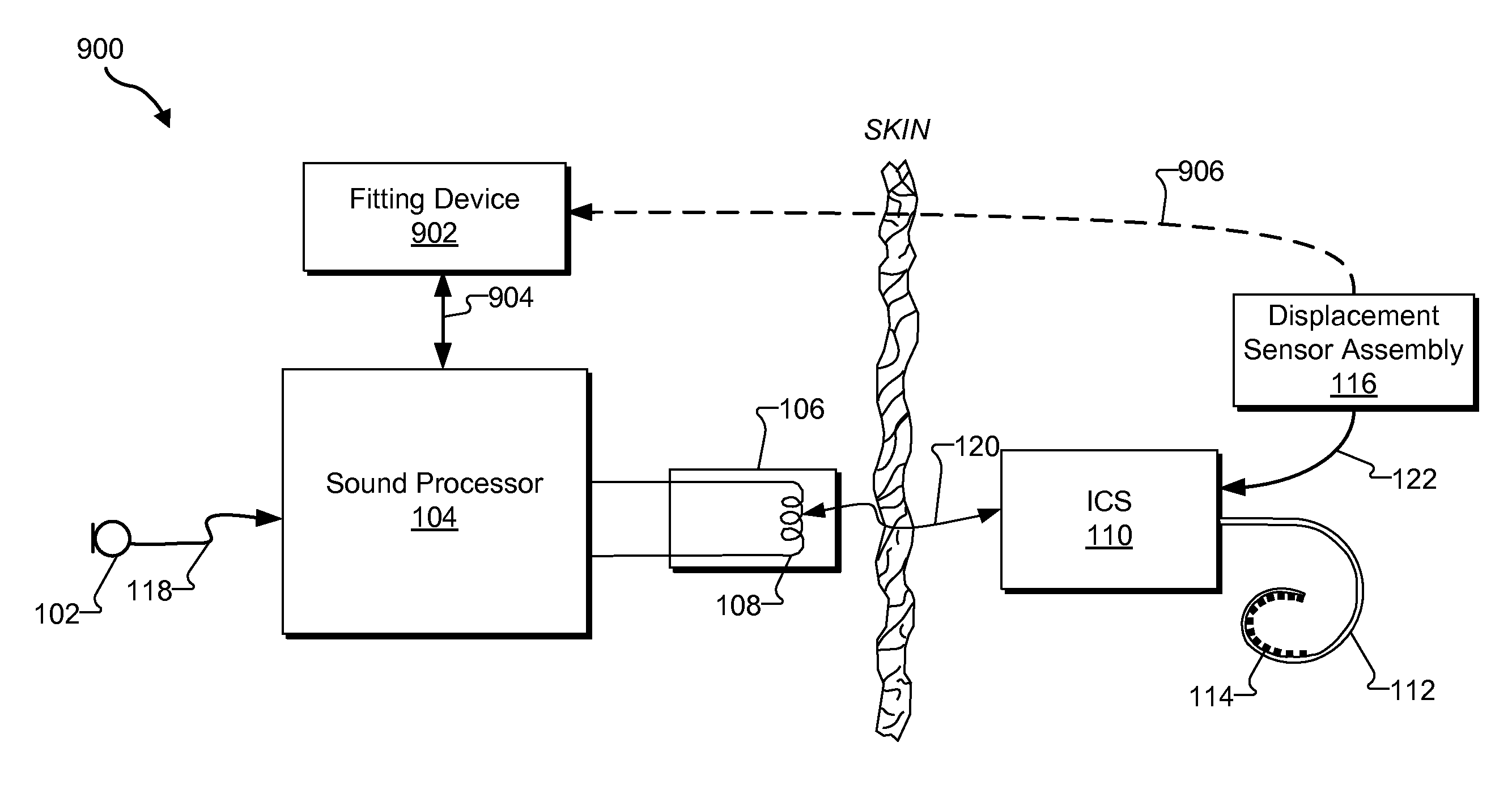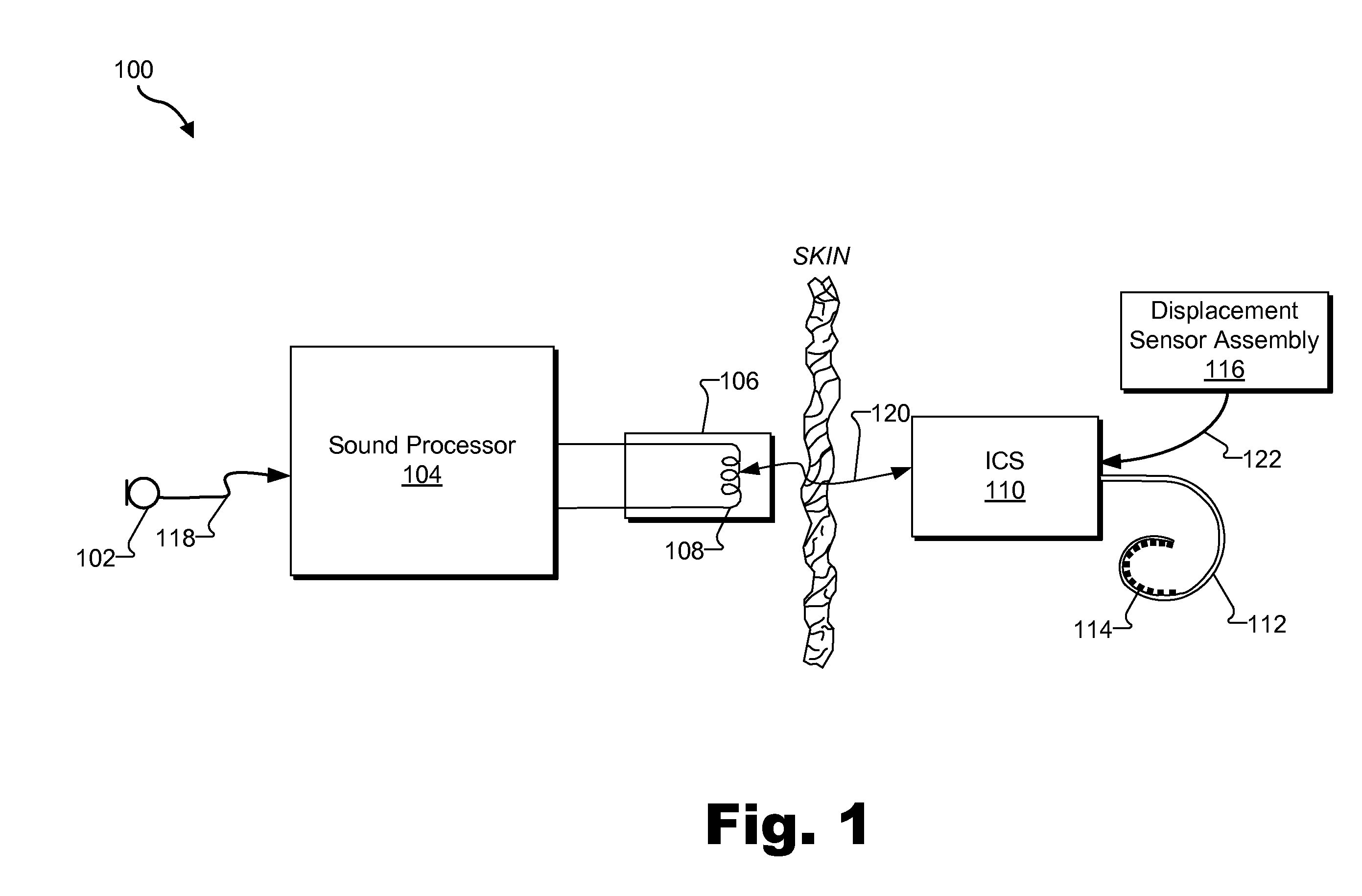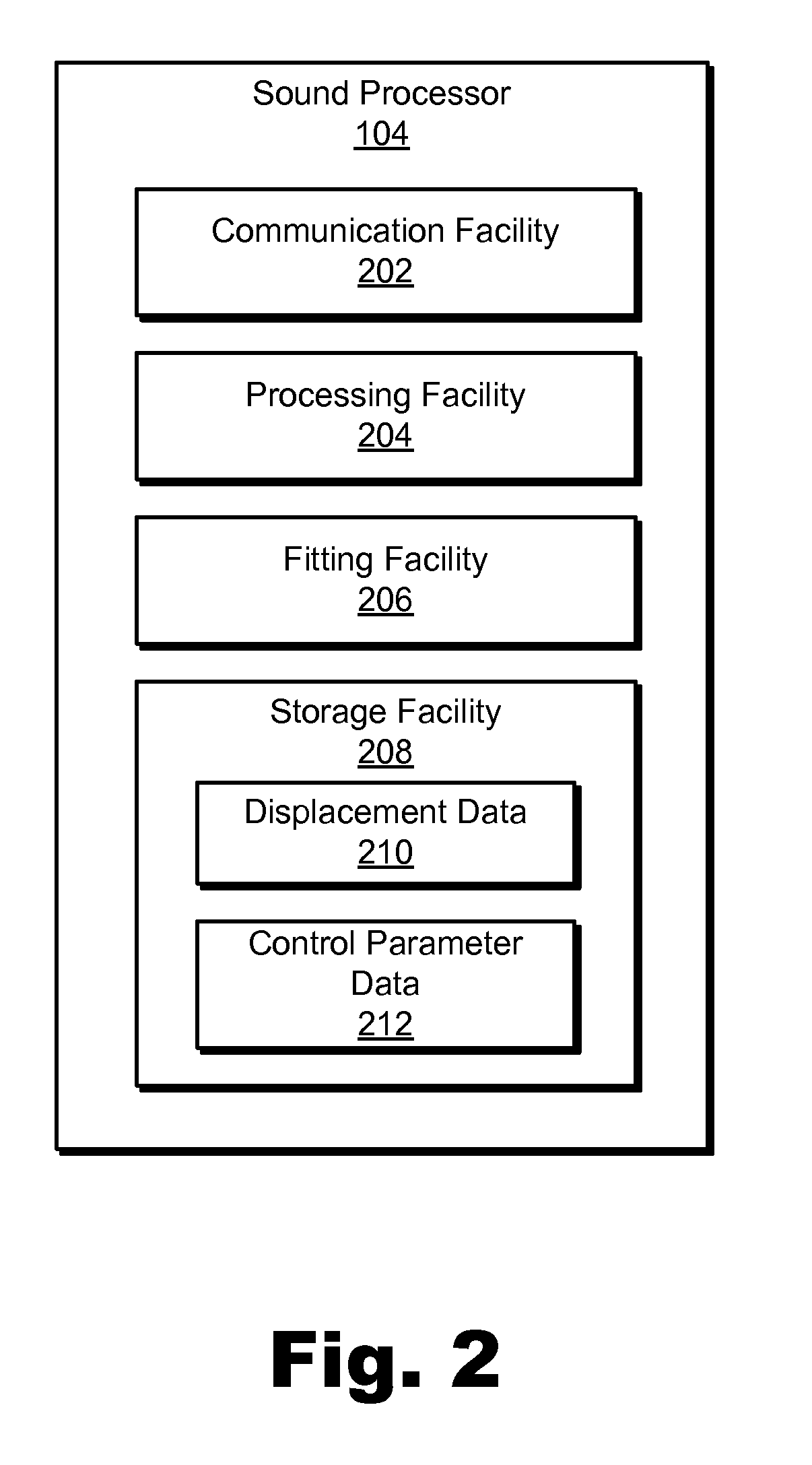Systems and Methods for Fitting a Cochlear Implant System to a Patient Based on Stapedius Displacement
- Summary
- Abstract
- Description
- Claims
- Application Information
AI Technical Summary
Benefits of technology
Problems solved by technology
Method used
Image
Examples
Embodiment Construction
[0024]Systems and methods for fitting a cochlear implant system to a patient based on stapedius displacement are described herein. An exemplary system includes an implantable cochlear stimulator configured to be implanted within a patient, a sound processor communicatively coupled to the implantable cochlear stimulator and configured to direct the implantable cochlear stimulator to generate and apply electrical stimulation to one or more stimulation sites within a cochlea of the patient, and a displacement sensor assembly configured to be implanted within the patient (e.g., coupled to the stapedius tendon, the stapedius muscle, and / or the stapes of the patient). The displacement sensor assembly is further configured to measure a displacement (e.g., by measuring a movement, strain, tension, etc.) of the stapedius (e.g., the stapedius muscle and / or the stapedius tendon) that occurs in response to the application of the electrical stimulation and transmit displacement data representati...
PUM
 Login to View More
Login to View More Abstract
Description
Claims
Application Information
 Login to View More
Login to View More - R&D
- Intellectual Property
- Life Sciences
- Materials
- Tech Scout
- Unparalleled Data Quality
- Higher Quality Content
- 60% Fewer Hallucinations
Browse by: Latest US Patents, China's latest patents, Technical Efficacy Thesaurus, Application Domain, Technology Topic, Popular Technical Reports.
© 2025 PatSnap. All rights reserved.Legal|Privacy policy|Modern Slavery Act Transparency Statement|Sitemap|About US| Contact US: help@patsnap.com



